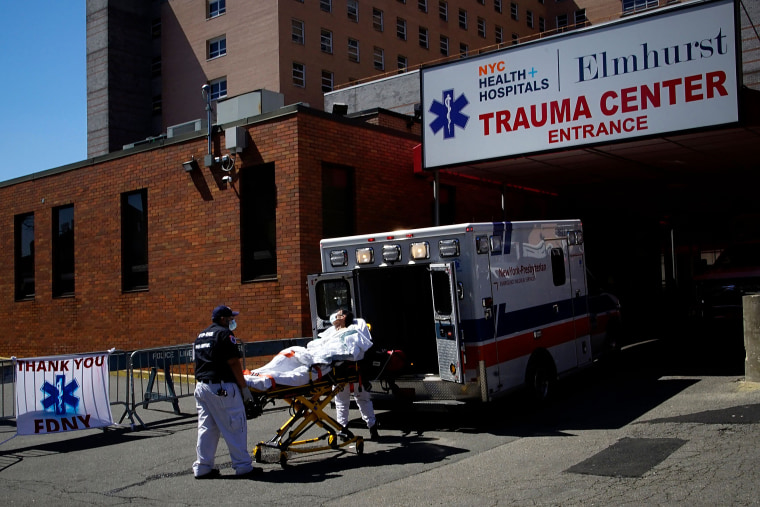Since the beginning of the coronavirus outbreak, residents of hard-hit New York City have been talking about ambulance sirens and how the wailing never seems to stop.
They're not imagining things — but the reality is even grimmer than some may have guessed. A huge number of those ambulances are responding to fatal or near-fatal heart attacks suffered by New Yorkers whose true health issue may be COVID-19, the disease associated with the coronavirus.
Emergency Medical Services, the part of the fire department that runs the city's paramedic response, is responding to three or four times its average daily number of cardiac calls, with each call almost twice as likely to involve a death.
Full coverage of the coronavirus outbreak
According to the Fire Department of New York, or FDNY, it means more patients are calling 911 closer to death, and many more of them are dying despite the best efforts of EMTs and paramedics before they ever reach a hospital.
"The dramatic increase of cardiac arrest calls and deaths from cardiac arrest calls demonstrates the impact suspected or confirmed COVID-19 patients are having on 911 and what EMS members are having to respond to every day," said a senior fire official.
NBC News was provided with raw numbers by FDNY data analysts who have been comparing the number of cardiac arrest calls this year to those last year. The difference is stark.
To EMS, a cardiac call is a 911 call in which a patient is dead from cardiac arrest or very close to it. "Death on a call" means the person was found with obvious signs of death when the ambulance arrived, like rigor mortis, or couldn't be resuscitated after the paramedics arrived.
From March 20 to April 5, 2019, cardiac calls averaged 69 a day in New York City, with an average of 27 deaths — 39 percent of the calls.
For the same period this year, cardiac calls averaged 195 a day, with an average of 129 deaths, meaning 66 percent of those calls involved a death.
The difference has become more pronounced as the disease has spread.
From March 30 to April 5, 2019, there were an average of 69 calls a day for cardiac patients and 26 deaths, meaning 38 percent of the calls.
For March 30 to April 5, 2020 — the week ending Sunday — cardiac calls averaged 284 a day, with 200 deaths a day. Seventy-two percent of the calls ended in death.
The numbers for Sunday were the highest yet. Out of 322 cardiac calls, 241, or almost 75 percent, ended in death.
Capt. Jing Kong, a 16-year EMS veteran, said via the official FDNY Instagram account, "I know crews that go from cardiac arrest to cardiac arrest all day."
Download the NBC News app for full coverage and alerts about the coronavirus outbreak
According to the fire department, many of this year's cardiac calls also involve notations that the patient is suffering or has suffered fever and cough, but the precise percentage is unknown.
Sunday is the most recent day for which the department provided data.

